You’ve cleaned everything—the carpet, the floor, the walls—and it still smells like cat pee. You’ve scrubbed until your arms hurt. You’ve tried every air freshener known to humankind. Yet, the moment the humidity spikes, or you walk in after a long day, that sharp, unmistakable odor hits you like a brick. What gives?
I know the frustration, believe me. I’m a lifelong cat owner, and I’ve battled the dreaded “cat apartment smell” more times than I care to admit. It’s enough to make you question your life choices, right? The good news is, you don’t have to live this way. You can get rid of cat urine smell permanently, and I’m going to walk you through the simple, battle-tested strategy that actually works. We’re talking foolproof methods using stuff you might already have and some pro-grade solutions for those tough, old stains.
1. Why That Cat Urine Smell Won’t Quit
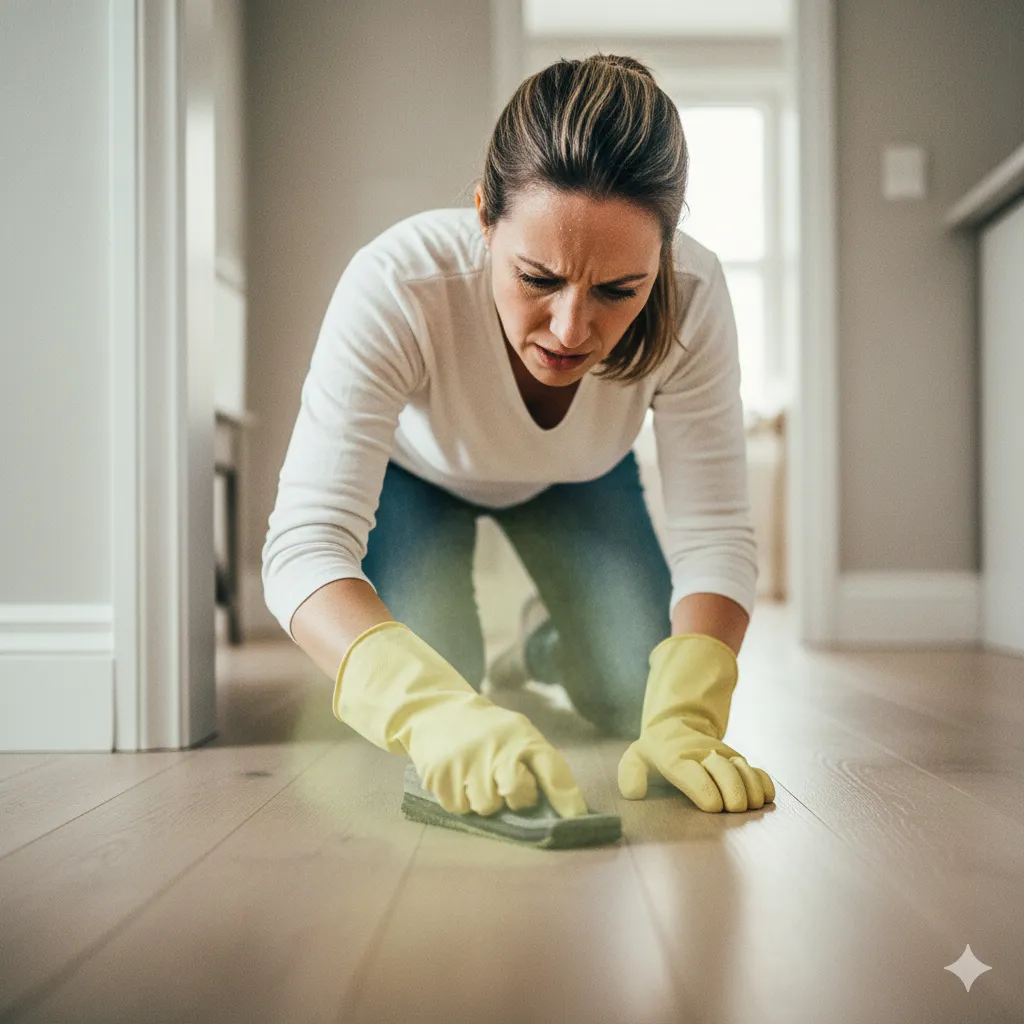
Let’s start with a little science lesson. This isn’t just about a stinky liquid; it’s a chemical war you’re fighting. Cat urine is unique (and uniquely awful) because of what it’s made of.
The Science Behind the Stink
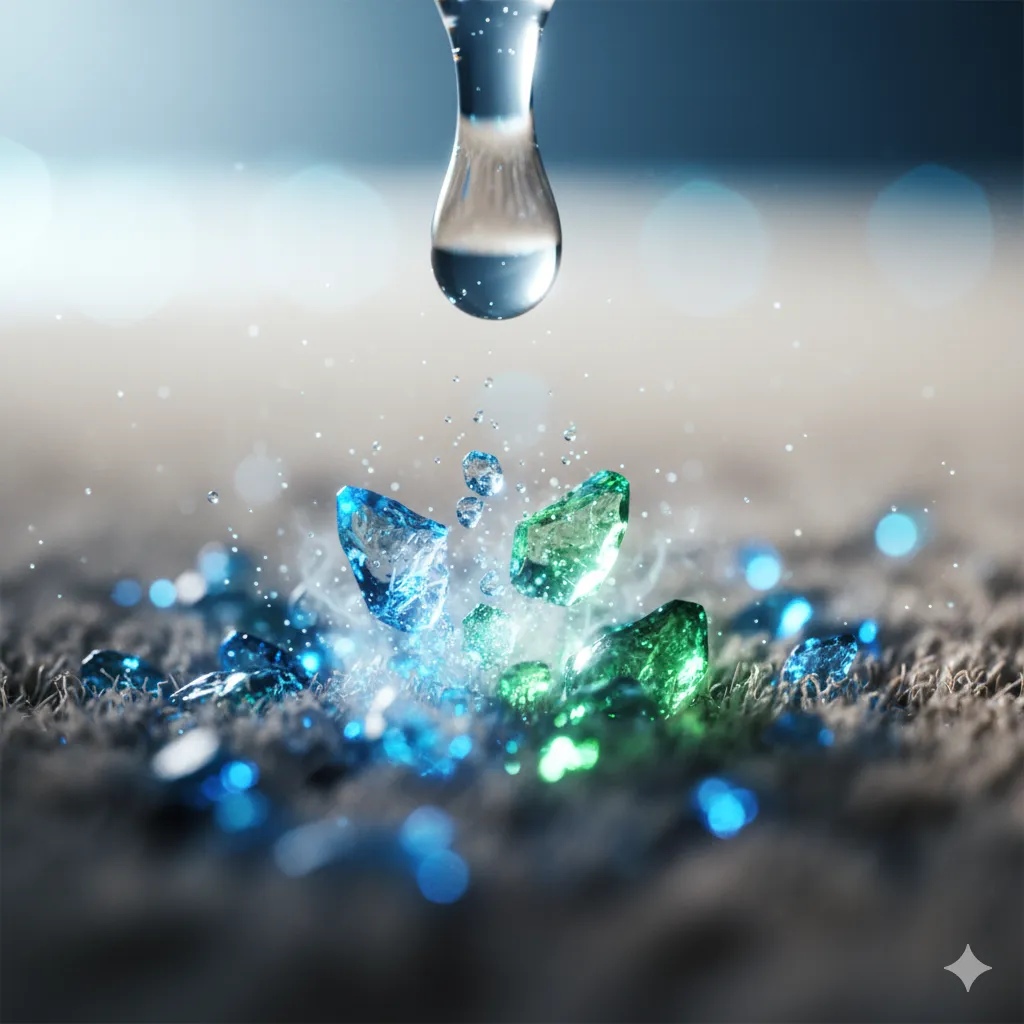
When your cat has an accident, the urine starts to decompose. First, the urea breaks down, and that’s when you get that strong ammonia smell. Ammonia is bad enough, but here’s the real kicker: as the urine dries, it forms uric acid crystals.
These crystals are the supervillain of pet odor. They are incredibly tough to dissolve, and they re-activate with even a small bit of moisture or humidity. Ever noticed the smell is worse on a rainy day? That’s the crystals waking up and releasing the odor compounds all over again. They seep deep into porous materials—your carpet fibers, the wood subfloor, the grout—making them nearly impossible to remove with regular cleaning products.
Why Masking is a Massive Fail
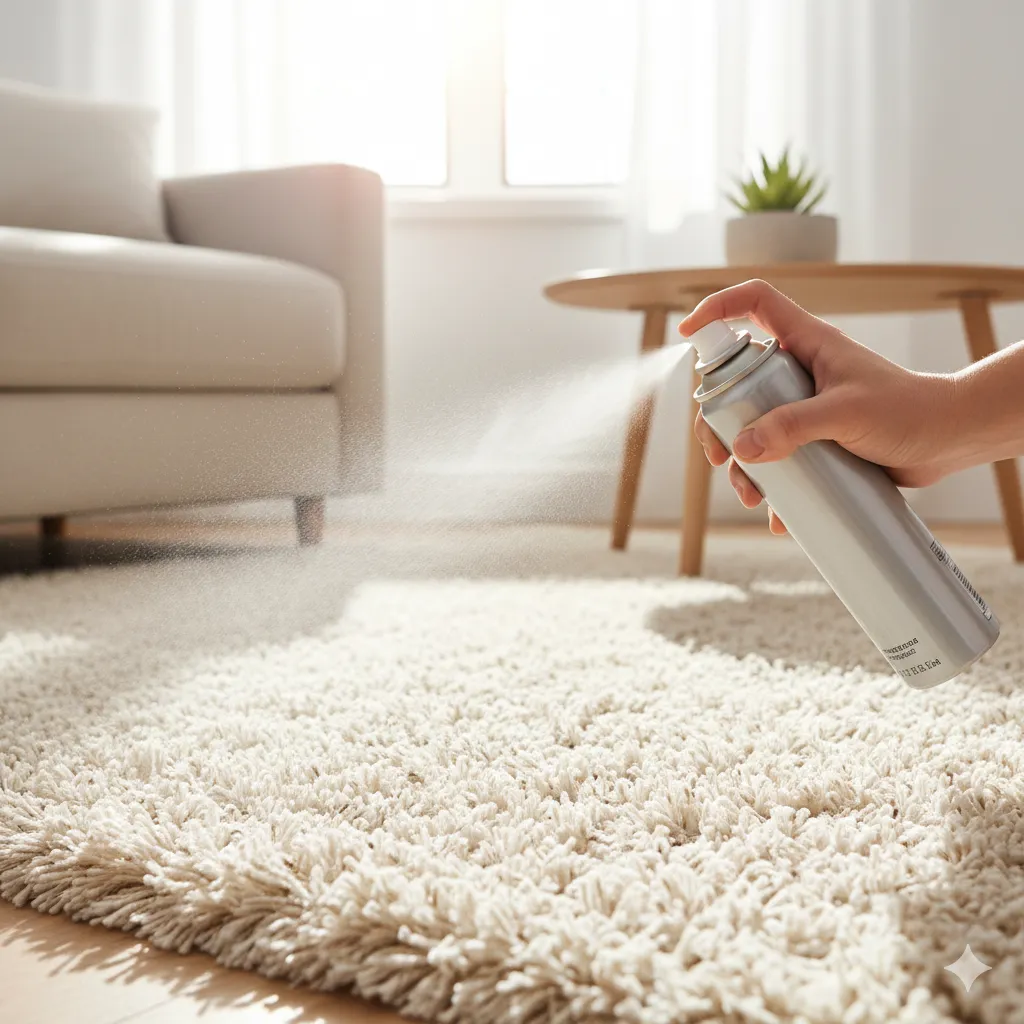
Think about your cleaning routine so far. You probably reached for a standard cleaner, maybe a floral-scented spray, or perhaps you lit a few candles. IMO, that was a mistake. Why? Because you didn’t neutralize the crystals; you just covered them up.
All you did was layer a pretty scent on top of the odor. As that perfume fades, the uric acid crystals are still there, lurking in the shadows, ready to stink up the place again. To really get rid of cat pee smell for good, you have to break down those crystals. That’s our mission, plain and simple.
2. How to Find Every Spot Before You Start Cleaning
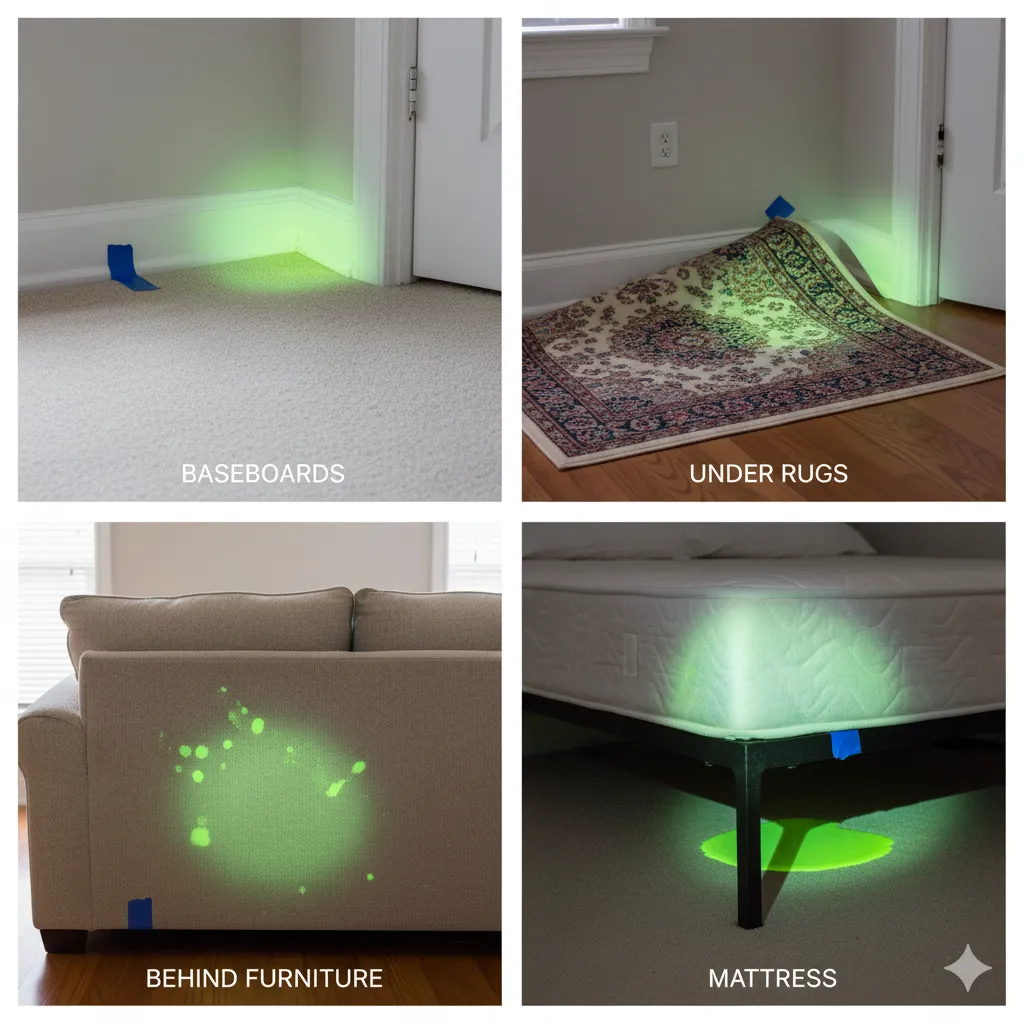
You can’t neutralize what you can’t find. Often, the worst-smelling spots are the ones you can’t see with the naked eye, especially those accidents that happened ages ago. Before you even grab a scrub brush, you need a reconnaissance mission.
Your Best Friend: The UV Blacklight
Seriously, go buy a UV blacklight flashlight (they’re cheap online, I promise). This is non-negotiable. Turn off all the lights, let your eyes adjust to the darkness, and sweep the light over the suspected area. Cat urine stains will glow a ghostly, neon yellow-green color. It’s kind of gross, but hey, now you know where the enemy is hiding!
Common Hideouts for Cat Stains
Don’t just check the middle of the floor. Cat odors love to hide in unexpected places. Shine that UV light:
- Along the baseboards: Cats often spray or back up to the wall to pee.
- Under rugs and mats: Accidents soak right through to the subfloor.
- Behind furniture: The quiet, forgotten corners are prime real estate for a kitty with an attitude.
- Near the litter box: Sometimes they just miss the target or pee over the edge.
As you find a spot, mark it with painter’s tape or snap a photo. This helps you track which areas you’ve treated and which ones need a second (or third) pass. FYI: If the stain is fresh, blot it up immediately with an old towel. Don’t rub; rubbing just pushes the mess deeper into the material.
3. How to Get Rid of Cat Urine Smell Naturally
For recent accidents or mildly scented areas, you can absolutely use natural, everyday household items to neutralize the odor. These solutions are generally safe and gentle on most materials.
The Three-Step Natural Cleaning Knockout
This process uses a sequence of common items to neutralize the odor and is a great way to get rid of cat urine smell naturally.
1. The Vinegar Soak (Neutralize the Alkali)
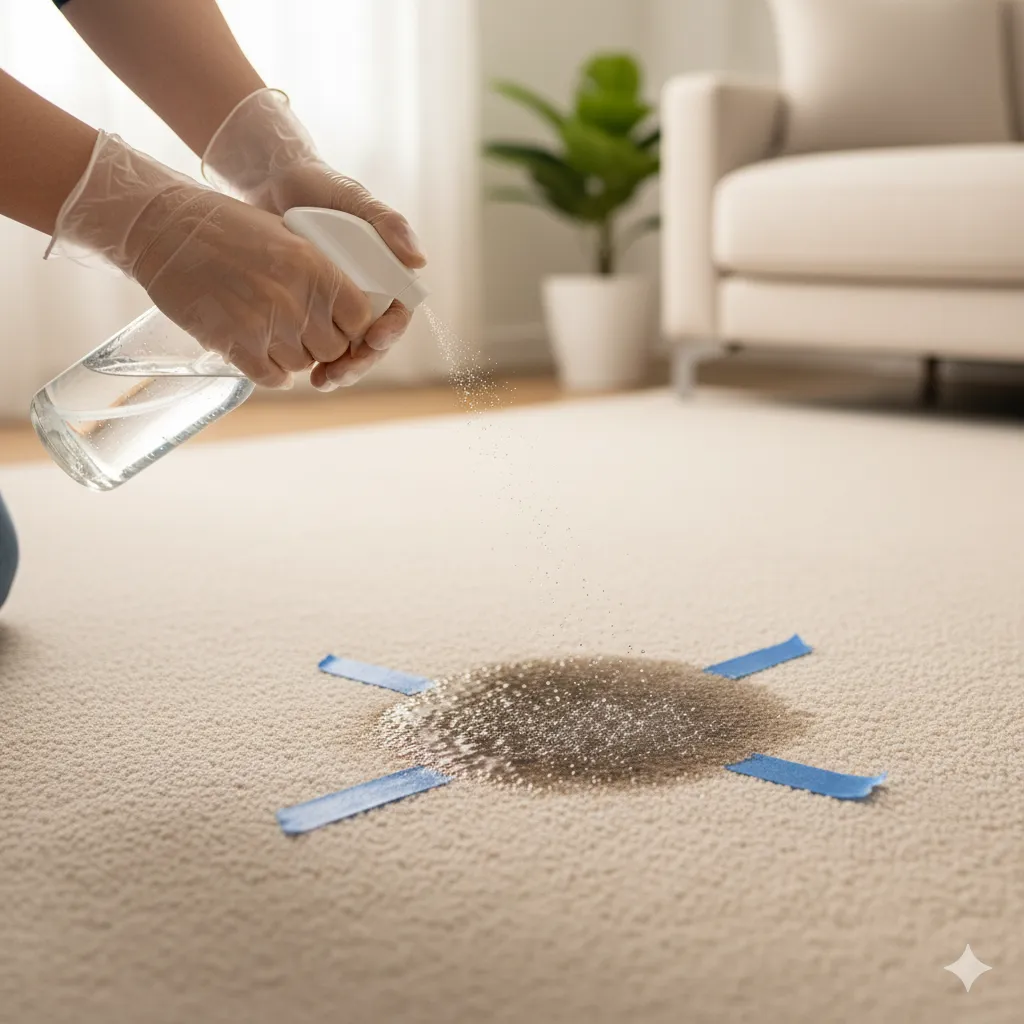
Cat urine is alkaline, so we use an acid—white vinegar—to neutralize it.
- Mix one part white vinegar with one part water in a spray bottle.
- Liberally soak the marked area. You need enough to penetrate as deep as the urine went. Don’t be shy!
- Let it sit for about 15–20 minutes. The smell will be vinegar-y, but trust me, that will dissipate.
- Blot the area completely dry with old rags or paper towels.
2. The Baking Soda Sprinkle (Deodorize)
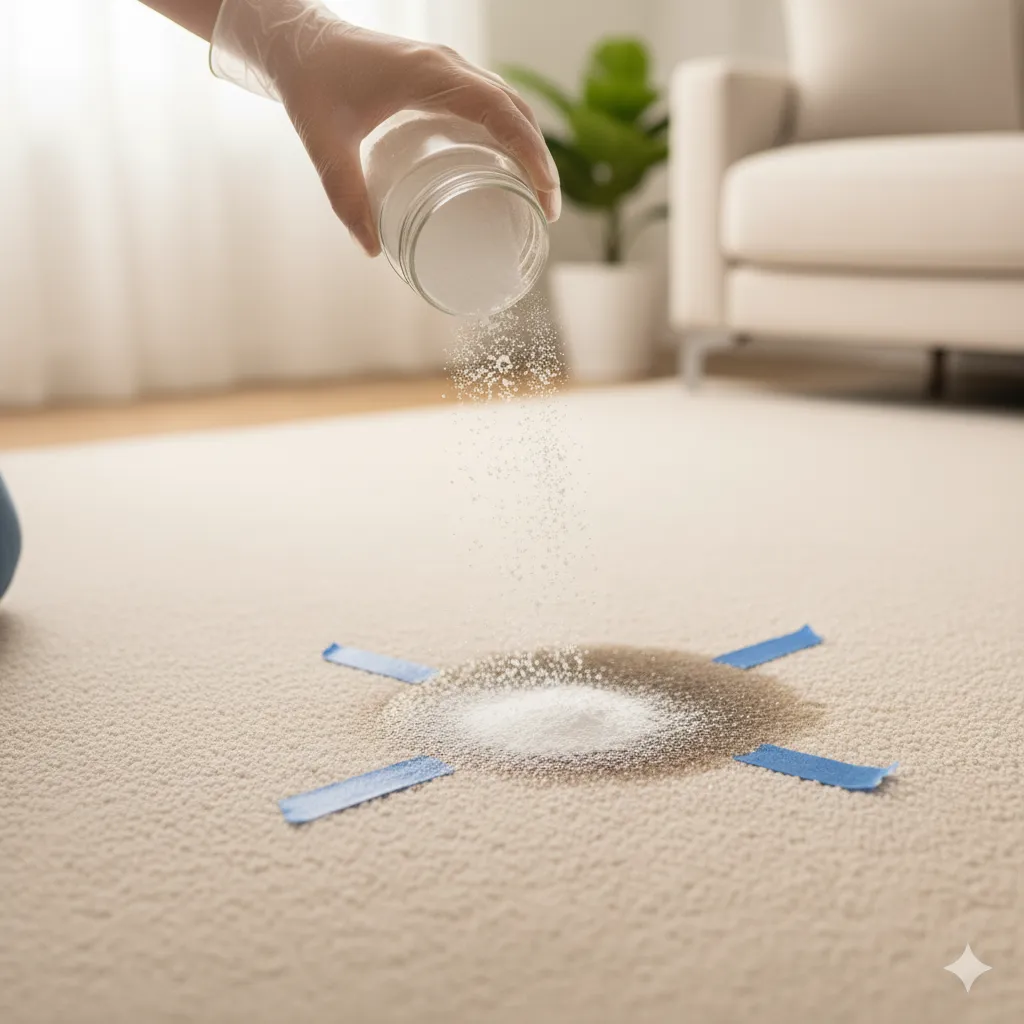
Baking soda (sodium bicarbonate) is a fantastic, natural deodorizer.
- Sprinkle a thick layer of plain baking soda over the treated area while it’s still slightly damp from the vinegar.
- This will soak up any remaining moisture and odors.
- Let it sit for as long as possible—at least a few hours, but overnight is best.
3. The Hydrogen Peroxide Finish (The Final Blow)
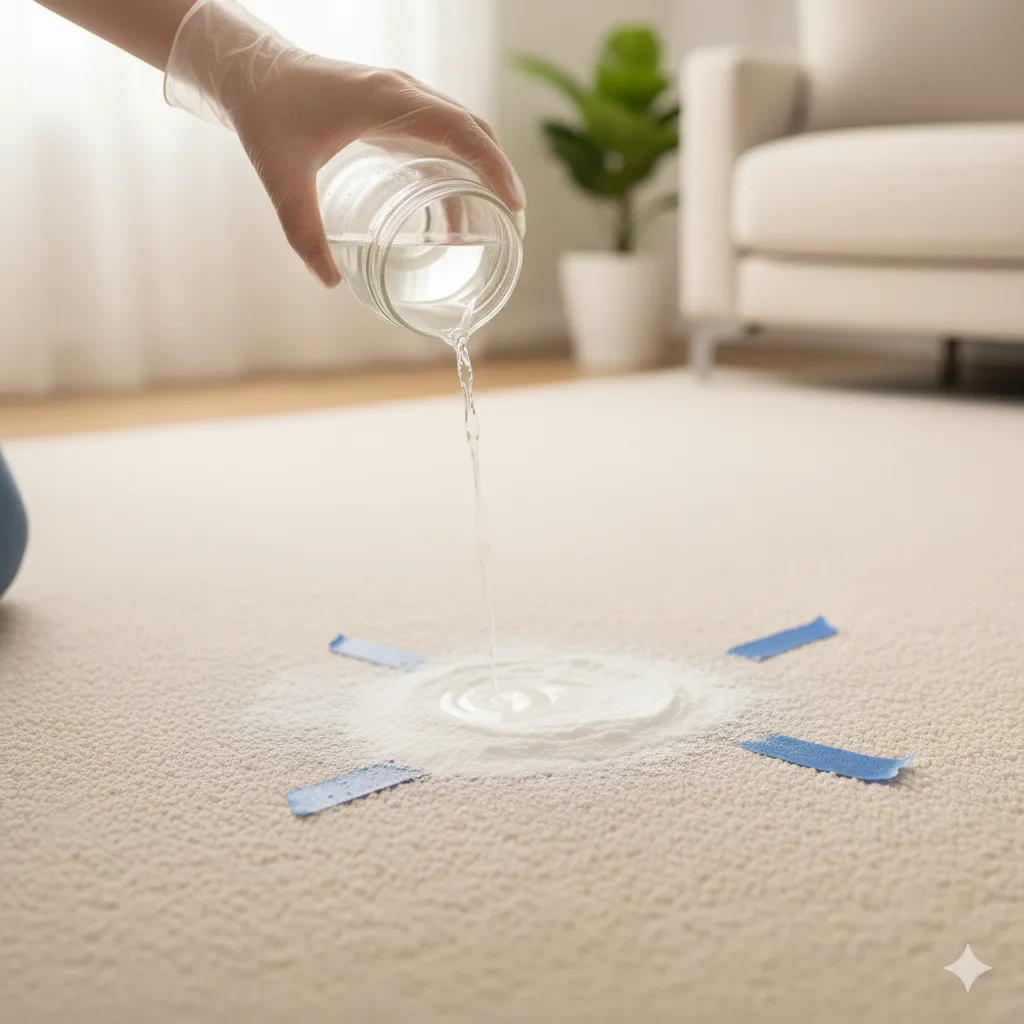
For extra oomph, especially on carpets, you can use hydrogen peroxide. Always spot-test this first on a hidden area, as it can occasionally cause discoloration.
- Mix 1/2 cup of 3% hydrogen peroxide with 1 teaspoon of dish soap (the clear kind) and stir it gently (don’t shake, or it will explode).
- Gently pour or blot this mixture over the baking soda. It will start to fizz.
- Use a soft brush to gently work the mixture into the fibers.
- After about 10–15 minutes, blot the area and then vacuum up all the dried residue.
Caution: Never, ever mix any vinegar or acidic product directly with bleach! That combination creates toxic chlorine gas, and you absolutely don’t want that. Stick to one method at a time.
4. Best Products to Get Rid of Cat Urine Smell (Tough Cases)
Okay, so you’ve tried the DIY route, but that ghost of an odor still haunts your house. This means those uric acid crystals are deeply embedded and laughing at your vinegar efforts. It’s time to bring in the heavy artillery: enzyme-based cleaners.
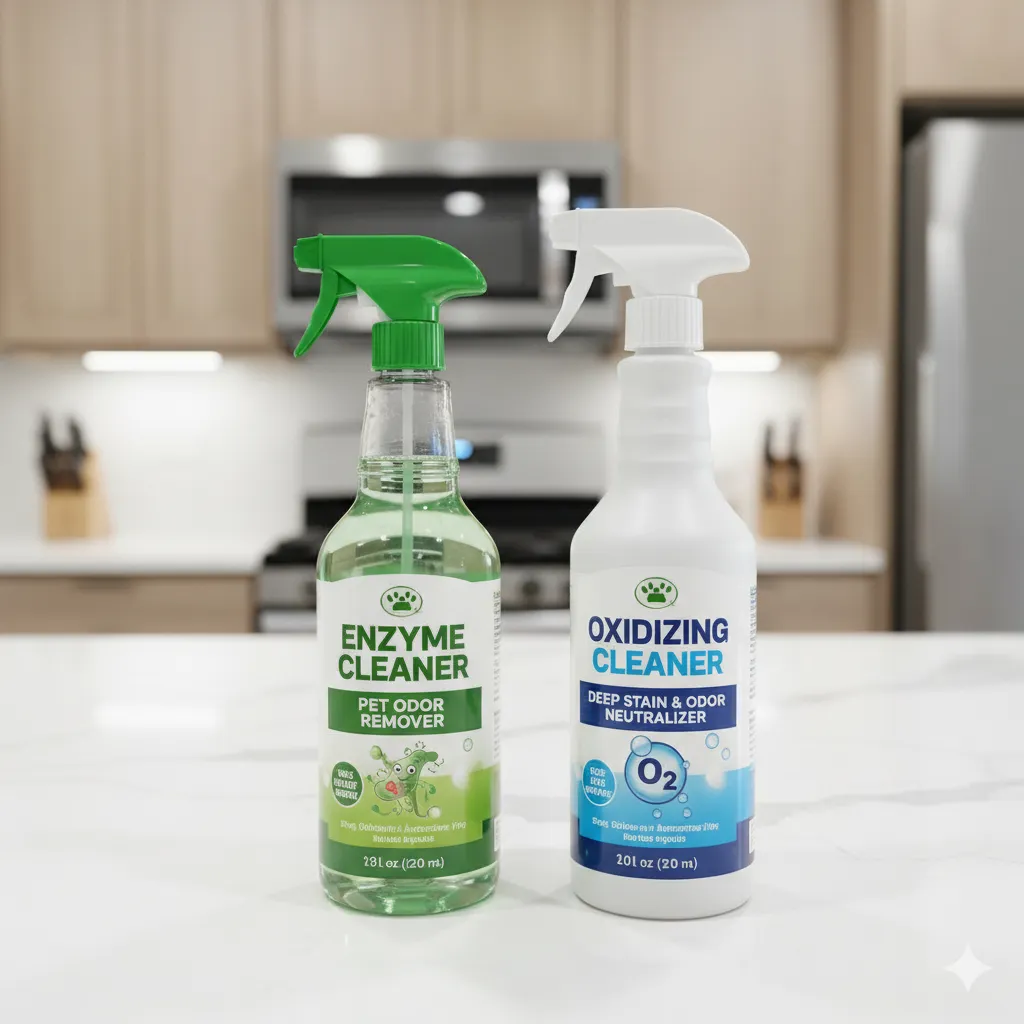
Why Enzymes are the Only Real Solution
Enzyme cleaners are microbial heroes. They contain live, non-pathogenic bacteria and enzymes that literally eat the uric acid crystals, along with the bacteria that cause the stink. Unlike vinegar, which just neutralizes the pH, the enzymes physically destroy the odor source. This is the only reliable way to get rid of cat urine smell for good in older, set-in stains.
Top Tier Cleaners You Need:
- Enzyme-Based Cleaners (The Must-Have): Look for products specifically labeled as enzyme or bio-enzymatic pet odor and stain removers. Brands like Nature’s Miracle or Rocco & Roxie Supply Co. are popular for a reason—they work!
- Oxidizing Cleaners (For the Absolute Worst): Products with a gentle oxygen-based component (often peroxide-based but commercially formulated) can provide an extra kick for those super-old, super-strong smells that no enzyme product seems to touch.
How to Use Enzyme Cleaners Correctly
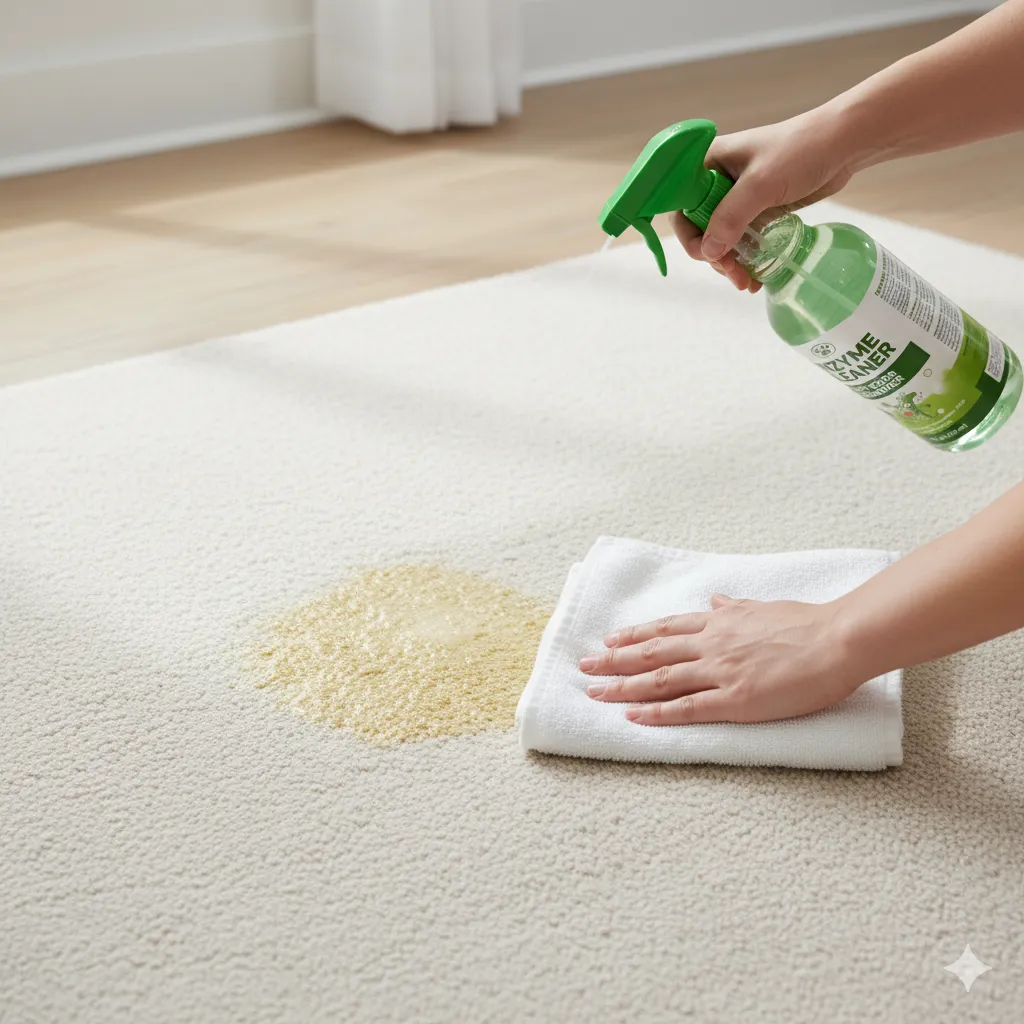
Most people mess this up. You have to be patient and follow the directions exactly for them to work.
- Drench It: Pour or spray the cleaner onto the stain, making sure you use at least as much cleaner as the amount of urine that originally soaked in. If the carpet padding is soaked, you need to soak the padding with the cleaner too.
- Let It Soak: This is the critical step. The enzymes need time to “chew” through the crystals. Cover the area with a towel (to keep the enzymes moist) and let it sit for the time recommended on the bottle—usually 15 minutes to an hour, or even overnight for really old stains.
- Blot, Don’t Scrub: After the soaking period, blot the area with a clean rag. Do not rinse the area immediately. Let it air dry completely. The enzymes continue to work as long as the area is drying.
Quick Buying Checklist: Always choose products that are non-toxic, pet-safe, and, if possible, fragrance-free. Heavy perfumes in cleaners can just mask the smell again, which defeats the whole purpose.
5. How to Get Rid of Cat Urine Smell from Different Surfaces
Different materials require slightly different approaches. The general rule is always: locate, soak with an enzyme cleaner, and then treat the residue.
Carpet & Rug
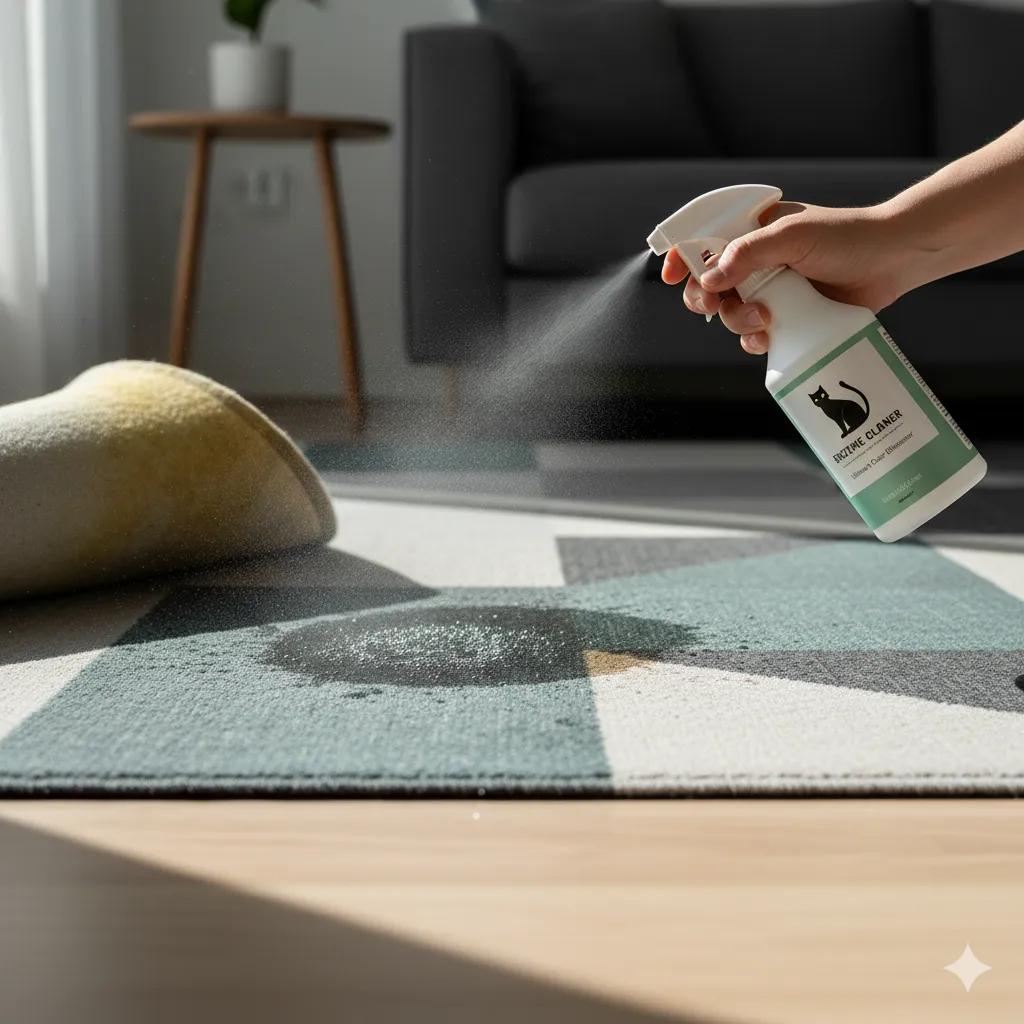
This is the toughest because the urine soaks through the fibers and into the padding and subfloor.
- The Soak: Liberally drench the area with a quality enzyme cleaner. You might need to gently lift the carpet edge to confirm the padding underneath is also soaked with the cleaner.
- The Extract: After the enzyme cleaner has done its work, use a wet/dry vacuum or a carpet extractor to pull the cleaner and the stain residue out of the padding. This is far more effective than just blotting.
Hardwood Floors
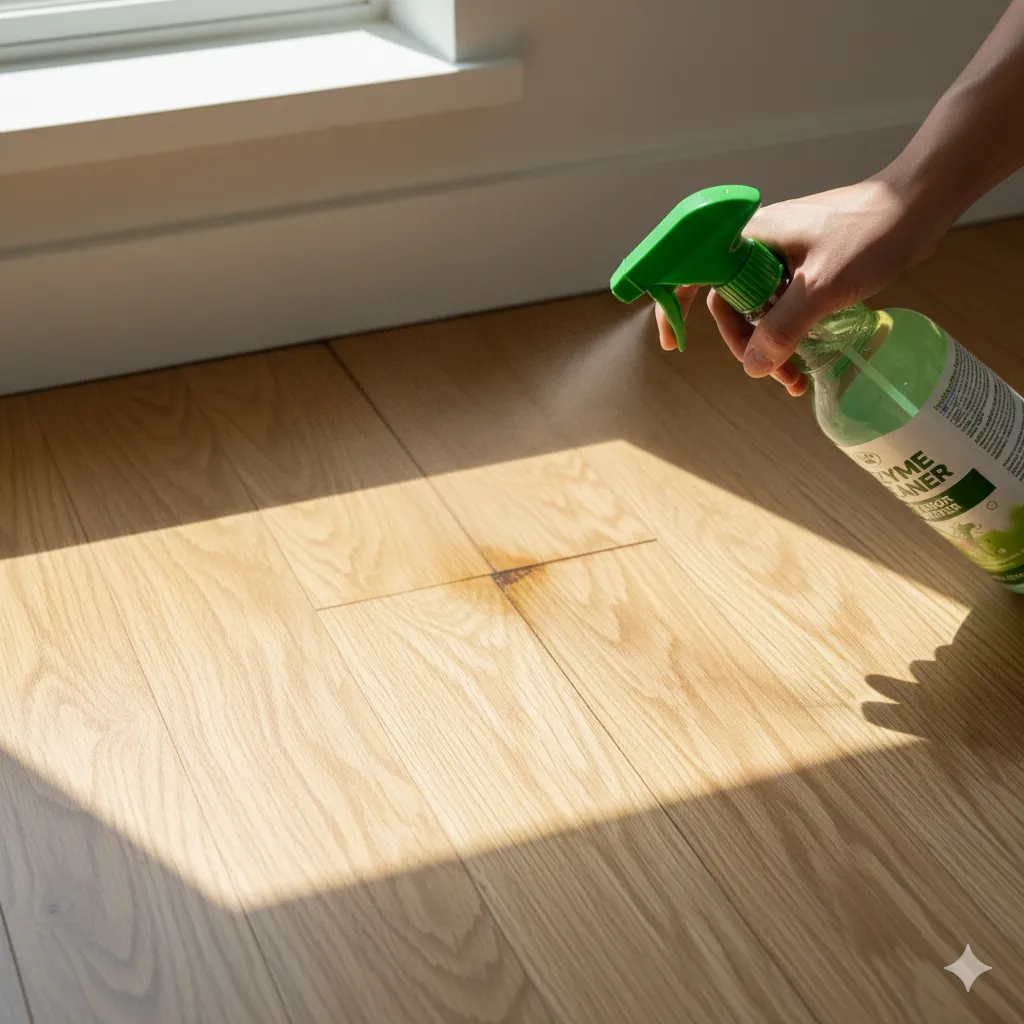
Urine can seep into the seams between boards and even stain the wood itself.
- The Clean: Clean the surface with an enzyme cleaner and let it dry. Don’t over-soak, as excess liquid can damage the wood.
- The Seal: If the smell persists after a few treatments, the urine has probably seeped through the finish and stained the subfloor. You may need to sand the affected area and apply a special odor-blocking primer or sealant before refinishing the wood.
Concrete / Basement Floors
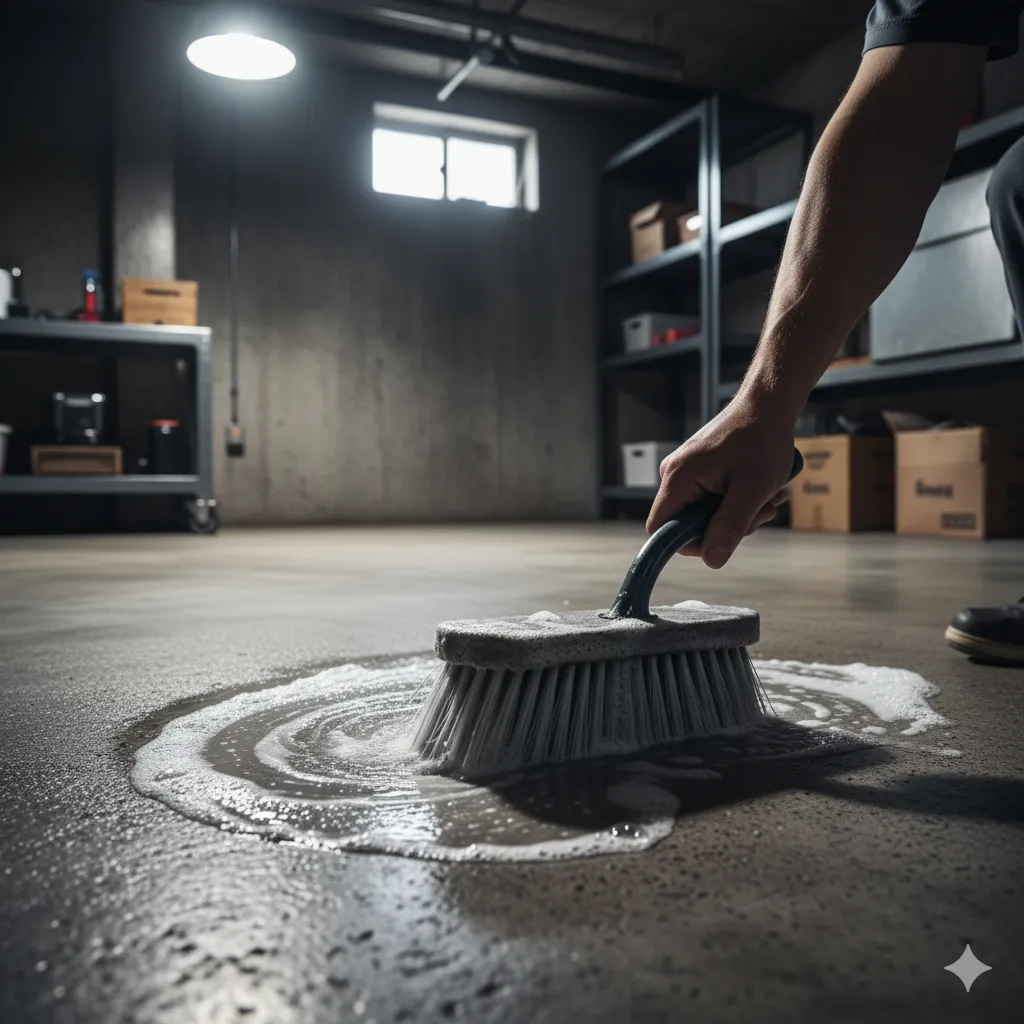
Concrete is incredibly porous and absorbs urine like a sponge.
- The Power Couple: After cleaning, use both a strong enzymatic cleaner and then follow up with an oxygen-based treatment. The two-step punch is often necessary to pull the smell out of the deep pores.
- The Scrubber: Use a stiff brush or deck brush to really work the cleaners into the surface before letting them sit.
Furniture & Upholstery
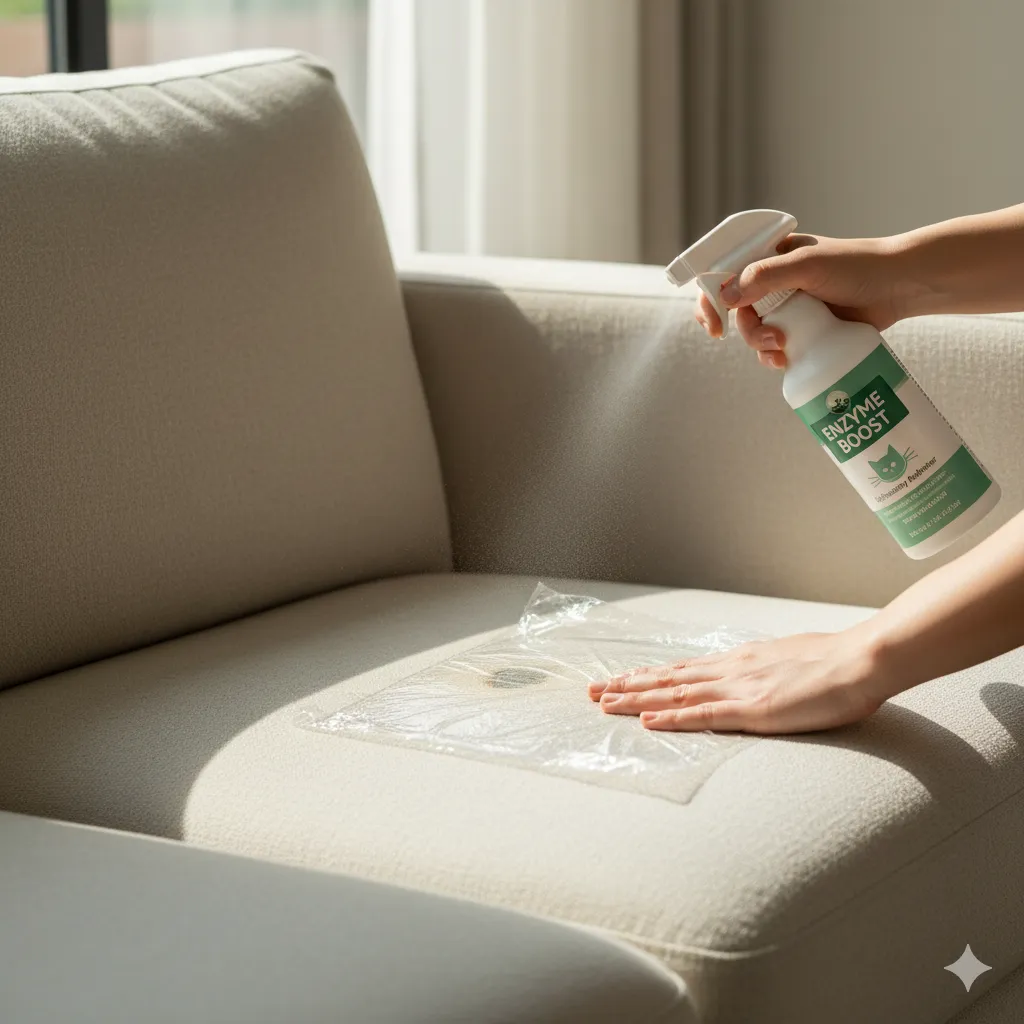
Sofas and chairs are notorious for holding on to cat odors.
- Spot Clean: Test the enzyme cleaner on an inconspicuous spot first. Apply the cleaner and let it dwell for an hour, covered with plastic wrap to keep it moist.
- Sunlight is a Friend: After cleaning, put the item out in direct sunlight if you can. The UV rays and fresh air are incredible natural deodorizers.
Mattress & Bedding
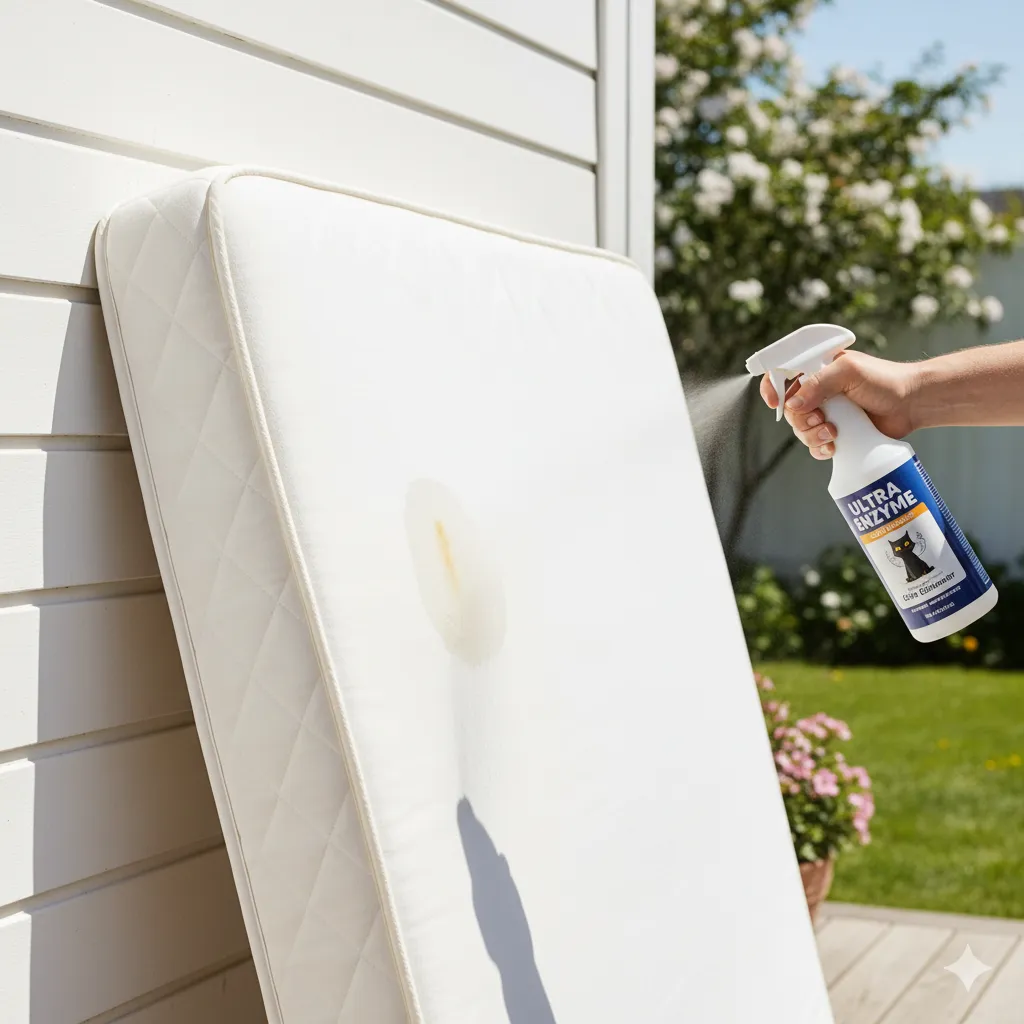
Oh, the dreaded mattress accident.
- Enzyme Soak: Soak the stain with enzyme cleaner, covering an area slightly larger than the stain itself.
- Air Dry Outdoors: Let the mattress air dry completely—preferably outdoors in the sun. This can take several days, but it’s the best way to ensure the smell doesn’t stick around.
Walls & Baseboards
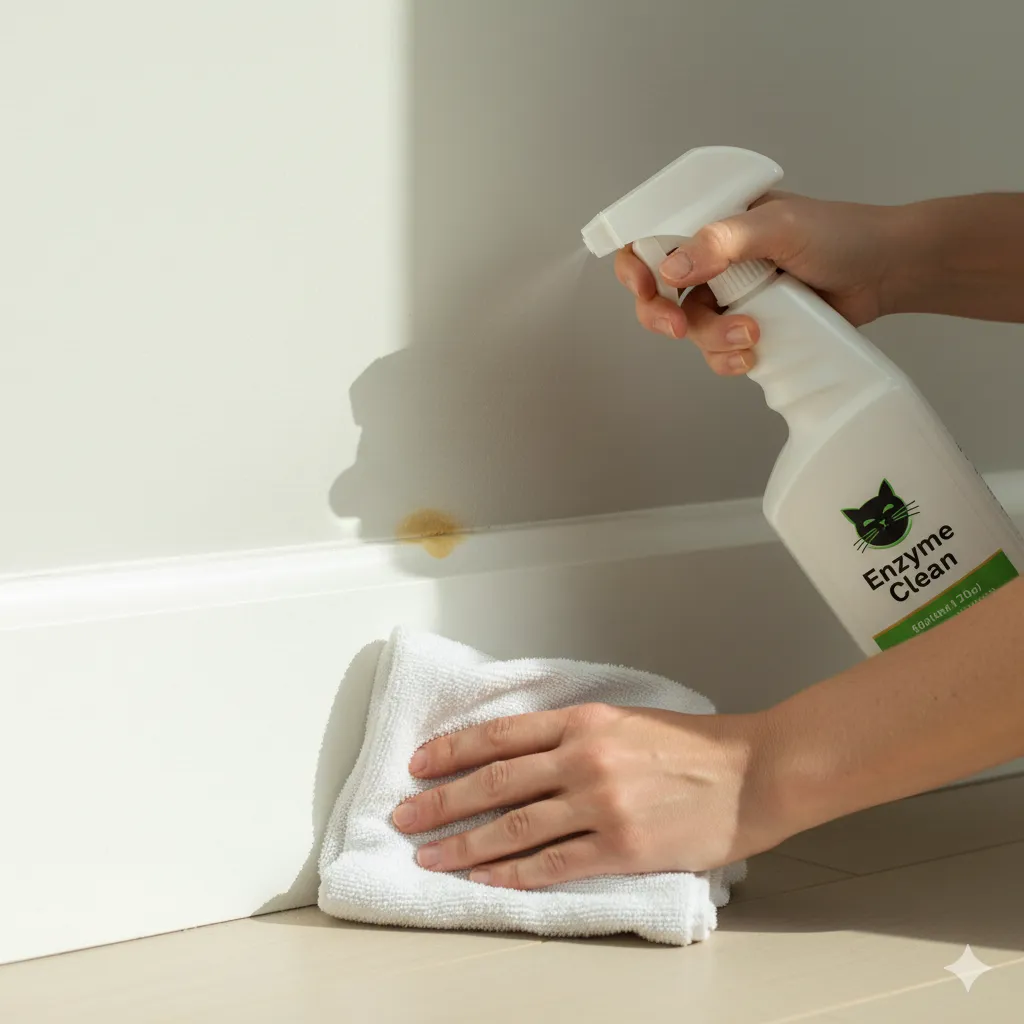
Cat spraying or backsplash is real.
- Clean and Seal: Wash the area with an enzyme solution. If the smell remains, you must seal the affected spot with a shellac-based or odor-blocking primer before repainting. Otherwise, the odor will bleed right through the fresh paint.
6. How to Get Rid of Cat Urine Smell in the Air
Even after cleaning the source, sometimes the air just holds onto a faint reminder. The odor particles cling to dust and simply hang out. Time to clean the air itself.
Natural Odor Absorbers
Don’t spend a fortune on scented plug-ins that only mask the problem. Try these natural, hardworking solutions:
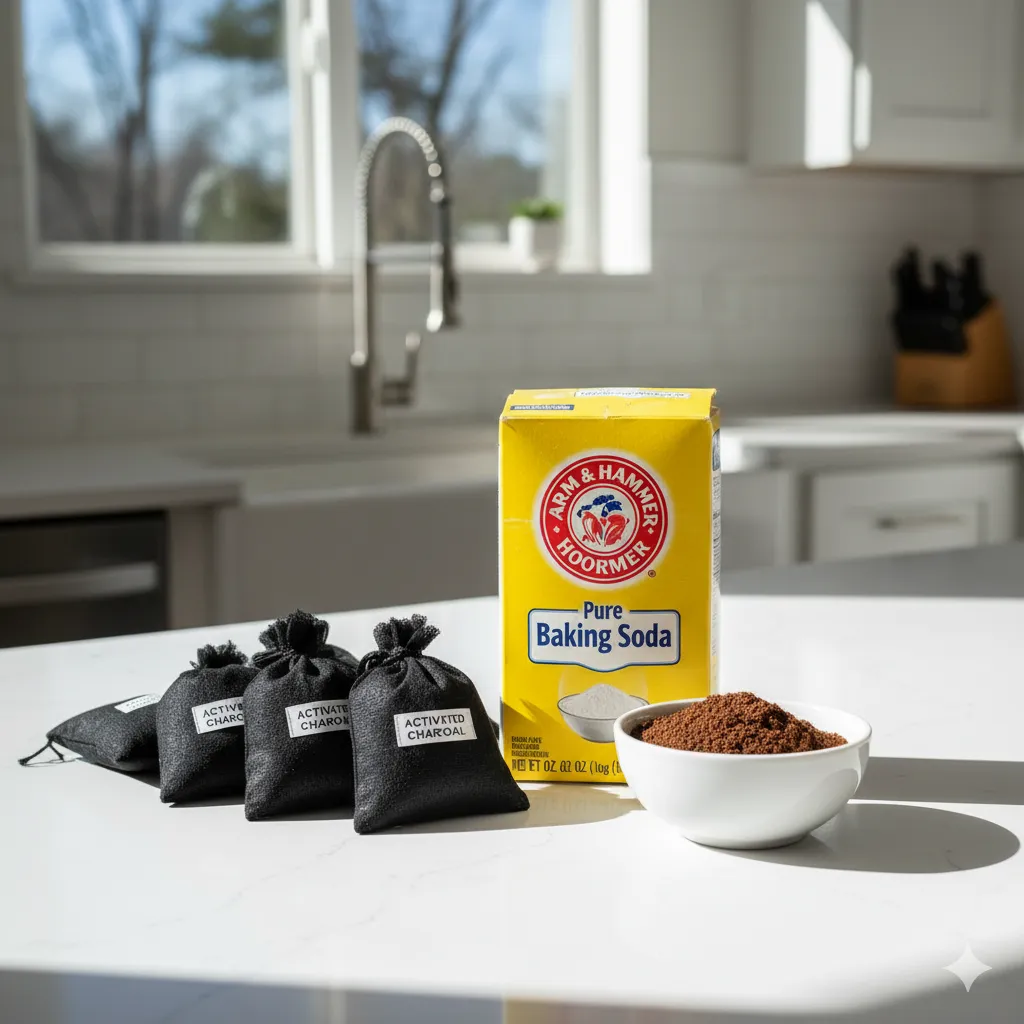
- Baking Soda: Place open boxes of baking soda in the problem areas to absorb ambient odors.
- Activated Charcoal: This is a powerhouse for absorbing odors without adding any scent. You can buy bags or pouches and leave them out.
- Coffee Grounds: A small, open dish of fresh coffee grounds can help neutralize odors in a smaller space, but the coffee smell will dominate (which might be better than cat pee, TBH).
Air Purifiers and Humidity
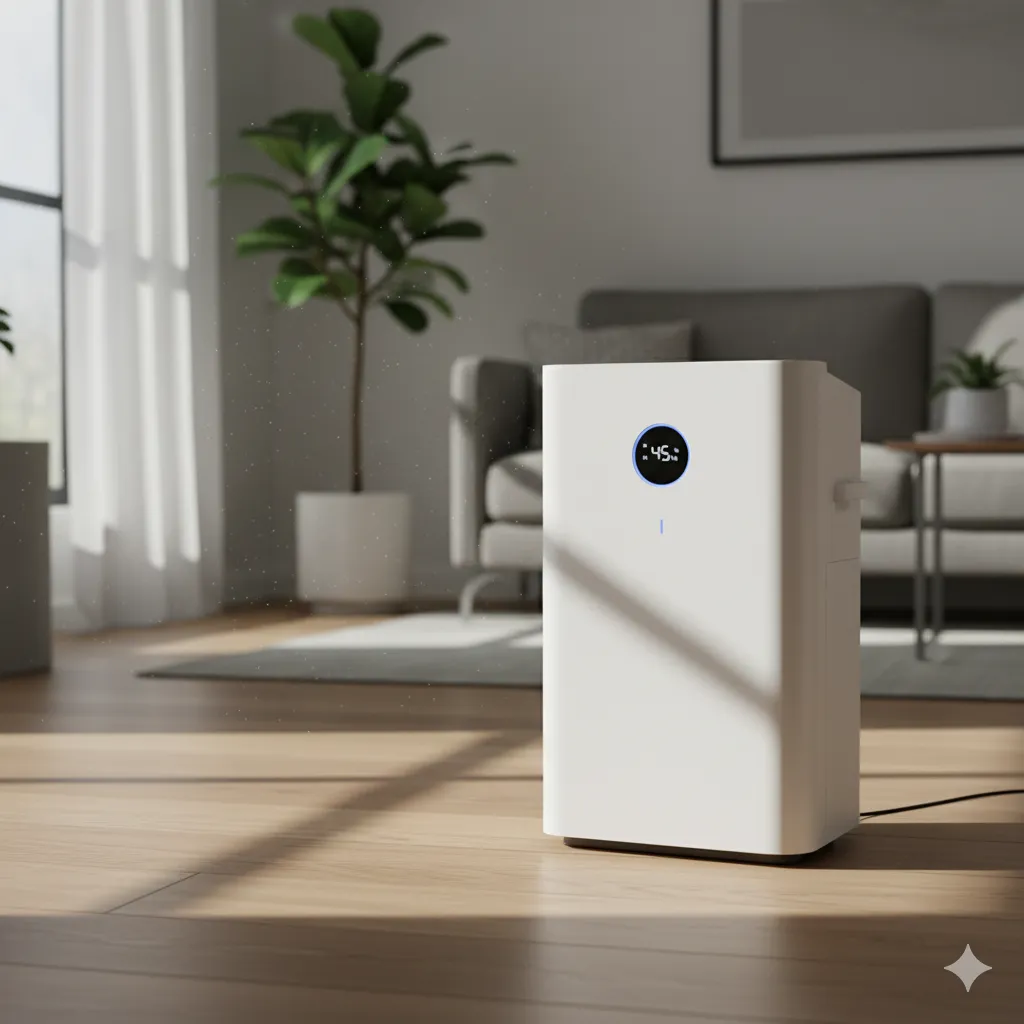
A high-quality air purifier with an activated charcoal filter (not just a HEPA filter) can remove airborne odor particles. But the bigger battle is humidity. Remember those uric acid crystals? Keep your indoor humidity low with a dehumidifier, especially in basements or bathrooms, to prevent the re-activation cycle.
7. Prevent Future Cat Urine Odors
Prevention is always better than cure, right? If your cat is consistently going outside the box, it’s not out of spite; it’s a signal that something is wrong.
Rule Out Health Issues First
The very first thing you need to do is schedule a vet visit. Inappropriate urination is a major symptom of a Urinary Tract Infection (UTI), kidney stones, or other medical issues. Don’t skip this step.
Address Behavioral Triggers
If the vet gives a clean bill of health, the issue is behavioral.
- Litter Box Math: The golden rule is simple: one litter box per cat, plus one extra. If you have two cats, you need three boxes.
- Scoop Daily: I mean daily. Cats are notoriously fastidious. Would you use a porta-potty that hadn’t been cleaned in three days? Nope.
- Litter Type: Many cats hate scented litter. Switch to a plain, unscented clay or clumping litter.
- Stress Check: New pet? New person? Loud noises? Cats get stressed easily. Use a pheromone diffuser (like Feliway) in the problem areas to help calm their nerves.
Finally, clean the problem area thoroughly and then use a cat deterrent spray (something they don’t like, like citrus) in that spot. Always reward your cat when they use the box correctly—a treat and praise go a long way.
8. What to Do If the Smell Won’t Go Away
You’ve cleaned, you’ve soaked, you’ve prayed, and yet… still a faint whiff. Don’t lose hope.
Repeat the Blacklight Check
Grab that UV light again. Did you miss a spot? Did the stain just migrate? Sometimes, when you clean one spot, the smell from an adjacent, untreated area becomes more noticeable. Re-treat any area that still glows. Consistency is key; some areas need repeat treatment.
The Last Resort: Replacement and Professionals
If you have a carpet with a stain that’s been there forever, you may have reached the point of no return. The urine has likely saturated the padding, the subfloor, and the tack strips.
- Remove and Replace: For tenants, this is tough. For homeowners, it’s time to cut out the contaminated section of carpet and padding. Seriously.
- Seal the Subfloor: Even if you replace the carpet, you must treat the subfloor. Once you expose the subfloor (wood or concrete), clean it one last time with an enzyme cleaner, let it dry, and then seal it with a shellac or oil-based odor-blocking primer before laying the new flooring.
For a whole-house odor, or if you’re dealing with a rental property and major contamination, consider calling a professional odor removal or restoration service. They have industrial-grade equipment and chemicals that are much stronger than what you can buy over the counter.
Say Goodbye to Cat Pee Smell for Good
Look, dealing with cat urine is one of the less glamorous parts of being a cat parent, but it doesn’t have to be a life sentence. We’ve covered a lot of ground, but the strategy is simple: Locate every single spot with a blacklight, Treat and Neutralize with an enzyme-based cleaner, Prevent future accidents by keeping your cats happy and healthy.
Don’t get discouraged if you have to treat a stubborn spot two or three times. The uric acid crystals are tough, but they aren’t immortal. Keep at it with the enzyme cleaners, keep that dehumidifier humming, and one day, I promise, you’ll walk into your house and smell nothing but… well, nothing. And that, my friend, is a beautiful thing.
Now, which of these tricks are you going to try first? Pin this checklist so you don’t forget the blacklight step!


